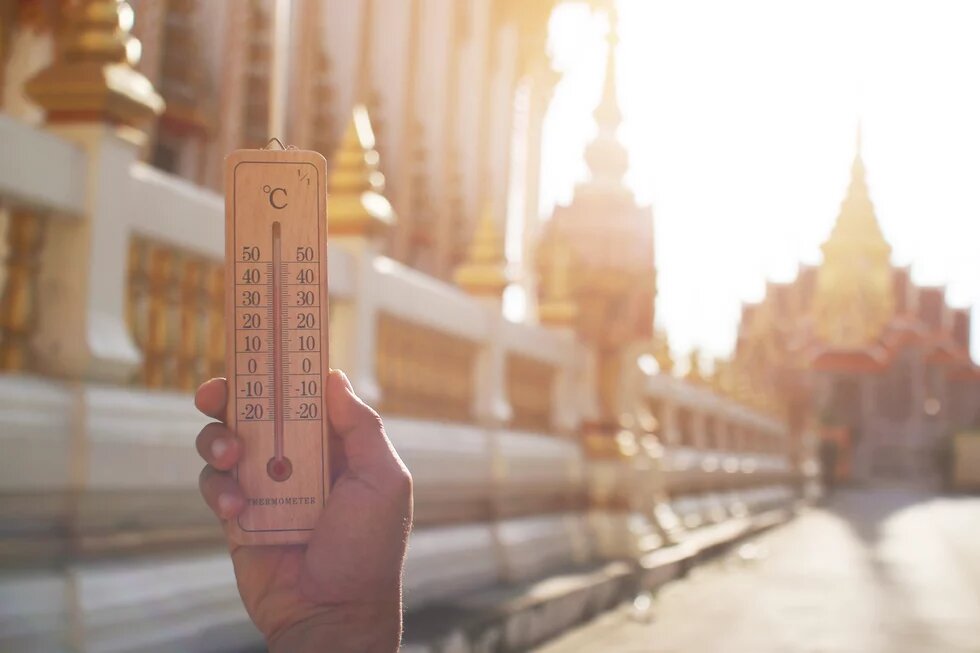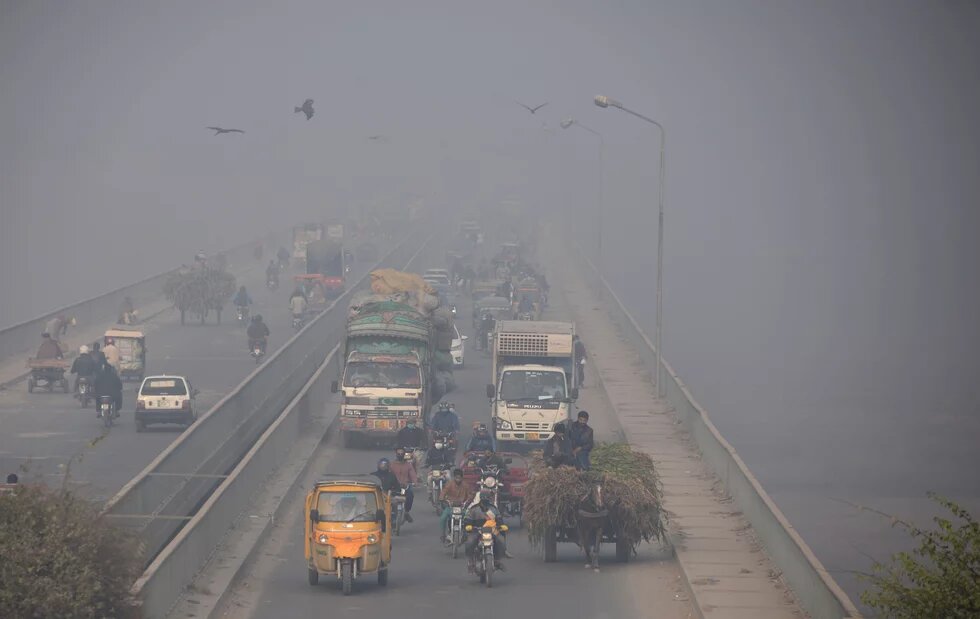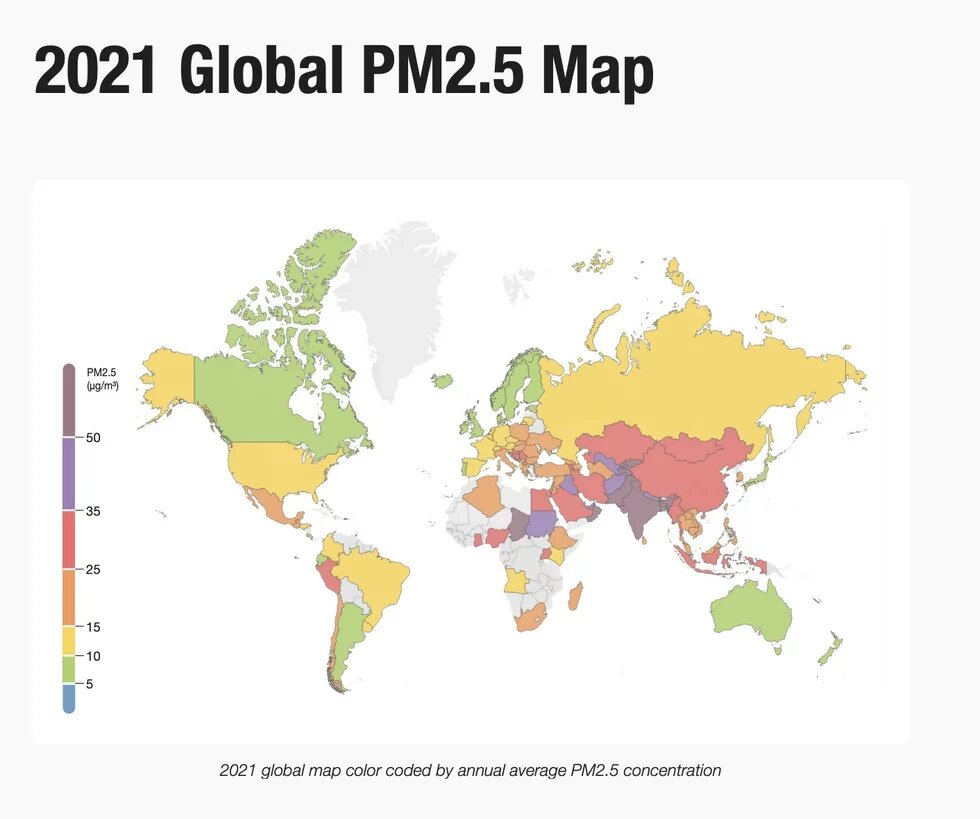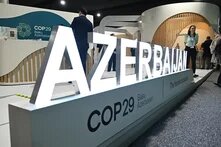
From New Delhi to Bangkok to Seoul, Asia is facing the world’s most serious air pollution catastrophe. Experts say this poor air quality becomes fatal with the onset of heat waves and drought from climate change, but citizens are coming up with their own solutions to tackle the dirty air.

This external content requires your consent. Please note our privacy policy.
Open external content on original site(*Scroll down to listen to all episodes)
At the recently concluded 27th United Nations Climate Change Conference in Egypt - the so-called “implementation COP” - a sense of urgency filled the rooms as different stakeholders stressed the need to take concrete actions of mitigation and adaptation, and warned of the undesirable consequences from human-caused climate change. Many of those stakeholders were from countries in Asia and on the frontline of climate change impacts. Their cities alongside weather related disasters, also suffer from some of the worst air pollution in the world fueled by carbone emissions, greenhouse gases, and the extreme heat being generated by a changing climate.
Hong Kong-based podcast production team Sustainable Asia, has partnered with German green NGO Heinrich Böll Foundation’s Asia Global Dialogue Programme, to embark on an explorative audio journey to six major cities in Asia that have suffered some of the most severe air pollution over the last decade. The five-episode “audio documentary”, entitled Clearing the Air, explores the major causes for dirty air, its health impacts, and its links to global warming. Clearing the Air also offers a glimpse of optimism, speaking to leaders of the air pollution citizen movements in Bangkok, Jakarta, Lahore, New Delhi, Kathmandu and Seoul.
Why an audio documentary on Asia’s air pollution crisis? A new report from The Lancet showed that air pollution kills 6.5 million people each year (12% of all deaths globally), 70% of which occur in Asia Pacific. Efforts in mitigating household air pollution have paid off, but researchers say that the reductions are offset by more deaths from ambient air pollution. And these deaths aren’t scattered equally: 92% occur in low and middle-income countries, but the report shows that very few of these countries make fighting pollution a priority, let alone allocating sufficient resources.
Air Pollution and climate change are closely linked. Greenhouse gases include carbon, methane and nitrous oxide emissions - common air pollutants - so reining in air pollution means mitigating climate change. With the earth on track to 1.5-2.0 degree warming, heatwaves will become more severe and frequent, further diminishing air quality. What’s more alarming is that this toxic combination can be a deadly respiratory disease cocktail for the young and old in Asia’s megacities.
How bad is air pollution in Asia?
As record-shattering heatwaves swept across Asia this year, six megacities that are already breathing in polluted air came to global attention. According to data from IQAir, out of the top 200 cities with the worst air quality around the world, most are located in Asia, as the continent suffered the highest yearly average PM2.5 concentration weighted by population.
In many Southeast Asian cities, wearing a mask has been a common practice even before the pandemic, and dirty air is the culprit.
A fruit seller in the street of Bangkok told Sustainable Asia and HBS, “I had breathing difficulty. COVID-19 makes things worse. I wear a mask for PM 2.5 and COVID-19 protection. It is dangerous to my health but I have to work on the street.”
In Jakarta, Yuyun Ismawati, a prominent environmental engineer in Indonesia and the founder of NGO Nexas3 Foundation had a similar observation. Ismawati said her grandson developed marks on his skin after a short exposure to open air during a period of heavy traffic. This could just be a tip of the iceberg. According to Greenpeace Indonesia, over 7,000 Jakarta residents die each year over high levels of PM2.5 – a particulate matter that’s thinner than human hair but can cause irritation to respiratory system – and close to 2,000 babies born with low birth weights for the same reason.
Over 90% of the population in the Asia and Pacific region experience levels of air pollution that present a significant risk to their health, and dirty air is found to cut life expectancy in South Asia by five years. Over 1.6 million people in India died partially due to air pollution. Air pollution from fossil fuel combustion has caused public health issues including respiratory diseases, lung cancer, labour loss and economic burden in Southeast Asia.
For India’s capital New Delhi that often tops the chart with the most polluted air, this can slash residents’ lifespan by up to an entire decade.
In its neighboring country Pakistan, the city of Lahore suffers a heavy smog each year. Its smog season is so serious that it forced some schools to shutter last year.
“We're going to go through two degrees of global warming by the middle of the century,” Rafay Alam, an environmental lawyer based in Lahore, commented on the dirty air in South Asia. “Most of those deaths are going to take place in Asian and African cities on account of the air pollution rising from the transport and energy sectors. So we are in the epicenter of a global apocalypse.”
Why is air pollution in Asia so bad?
In many of the megacities we reviewed, a high proportion of the pollution is from heavy traffic and combustion engine vehicles on the road.
According to C40 Cities - a network of climate change mayors from the top 100 cities of the world - pollutants from such vehicles account for 60% of the air pollution of Bangkok, for example, which is also one of the top 10 traffic- congested megacities in the world. The number of cars rose 2.5 times from 4.2 million in 1999 to 6.1 million a decade after, and jumped to 10.7 million in 2019. An expert attributed the surge to low parking costs, social pressure to own cars, a limited but expensive public transportation system, among others.
In Nepal’s capital city Kathmandu, transportation also contributes to part of the city’s air pollution, but open burning of solid waste is another culprit. Experts say that much of the municipal waste was incinerated. In a country where at least one-in-ten live in poverty, people are also forced to burn trash for heating. In South Asia, a 2020 study published in the journal Environmental Science and Technology showed that garbage burning can push up PM2.5 concentrations by nearly 30% in India and Nepal and lead to about 300,000 premature deaths.
![]()
Transboundary air pollution also plays a role, as a recent study in the journal Atmospheric Pollution Research found India’s polluted air from traffic blows over to Kathmandu. A similar problem occurs between South Korea and China, with research showing that agricultural burning and coal plants, as well as a dust storm from northern China, cause air pollution in Seoul.
Joint efforts from countries to combat dirty air have been stressed, while for more resource-rich nations like South Korea, experts say coal-fired and gas power plants should be retired as soon as possible and make way for renewables.
Asia burns the most coal around the world for energy use, with China and India taking the lead in the region to ramp up coal-fired power plants. These plants produce air pollutants including carbon dioxide, sulfur dioxide, nitrogen oxide and mercury.
Despite the recognised pollution from these plants, coal demand continues to surge over the last decade, according to a report from the IEA. IEA’s index reveals that the coal dependencies in Indonesia and India are still high, and the transitions to cleaner energy are likely to be the most challenging. India, for instance, consumes 10% of the world’s coal, and it accounts for three-quarters of the country’s energy generation. Two-thirds of the world’s coal outputs have to be replaced by renewables by 2030 if the current national climate goals are to be met.
What has been done about it and what else can be done?
To combat air pollution, governments of these six cities launched different measures, from Bangkok’s car inspection, Delhi’s anti-smog guns and water sprinklers to Seoul’s drone air quality monitors. But these measures have stopped short of improving air quality because they aren’t comprehensive.
That’s when citizens decided to take things into their own hands. Young Thai environmentalist Lynn Ocharoeonchai, with a speaker at hand, single-handedly started a climate strike in 2019 that turned into a movement that sought to push the government to speed up actions, while about 33 citizens in Jakarta sued the authorities at court in a landmark air pollution lawsuit and garnered success.
In Lahore, a former doctor and journalist kicked off a mothers’ movement out of concern for children’s health to provide a cleaner environment, and a citizen engineer started an initiative to pump out real-life air quality data for public knowledge. Environmentalists in Kathmandu pedal for cycling activism to drive road design for bikers to cut down roadside emissions.
With each city’s respective and unique causes for air pollution, health experts, data scientists, environmental activists, climate lawyers, and normal residents all have a story to tell. Listen to Clearing the Air podcast series to get their insights into this silent life-threatening issue that affects people in Asia at every breath. Episodes will be available in Spotify, Apple Podcasts, Anchor FM, and wherever you listen to your podcasts. It takes both different stakeholders to pitch in to ensure a just transition to megacities of clean air.





